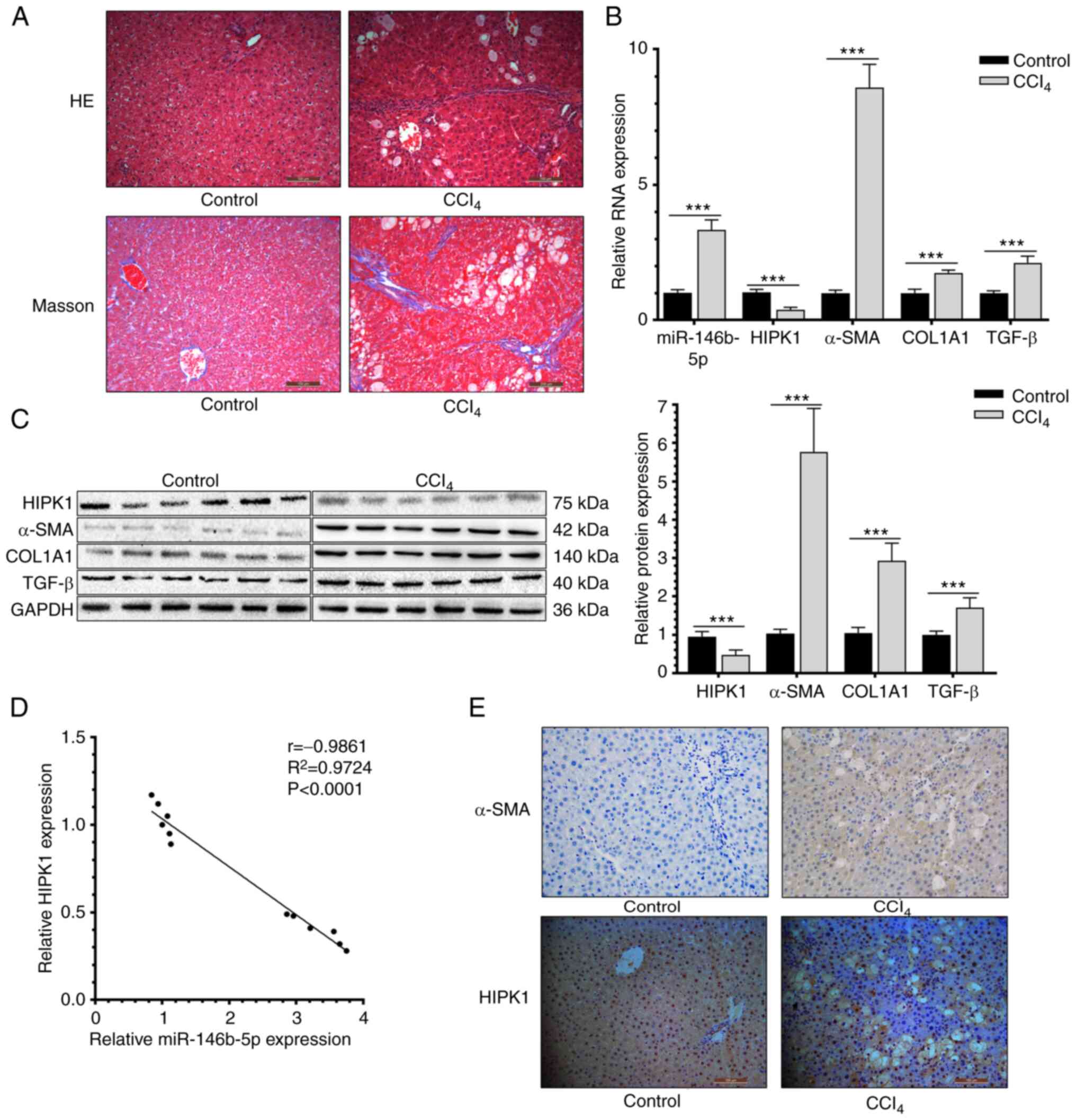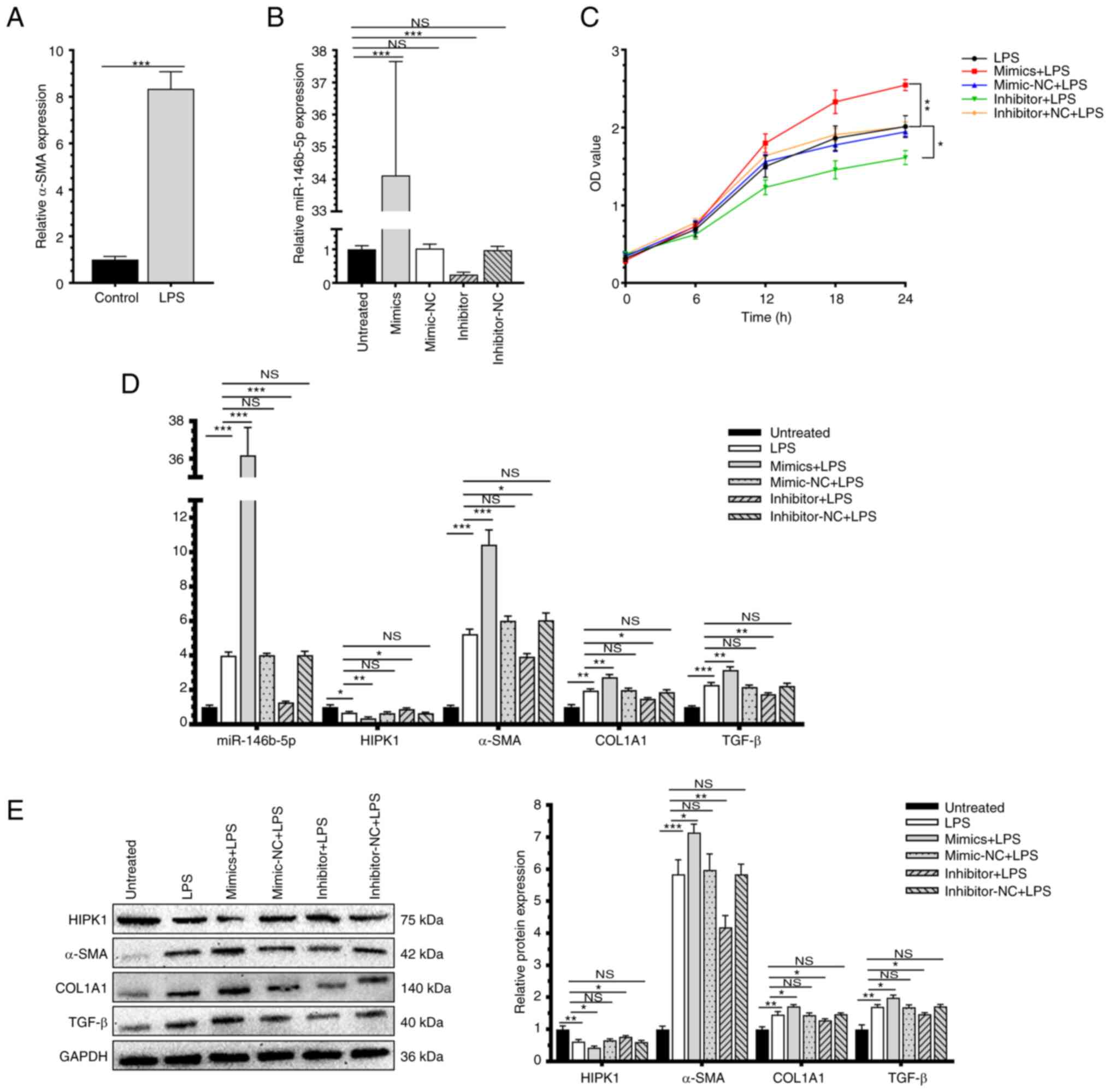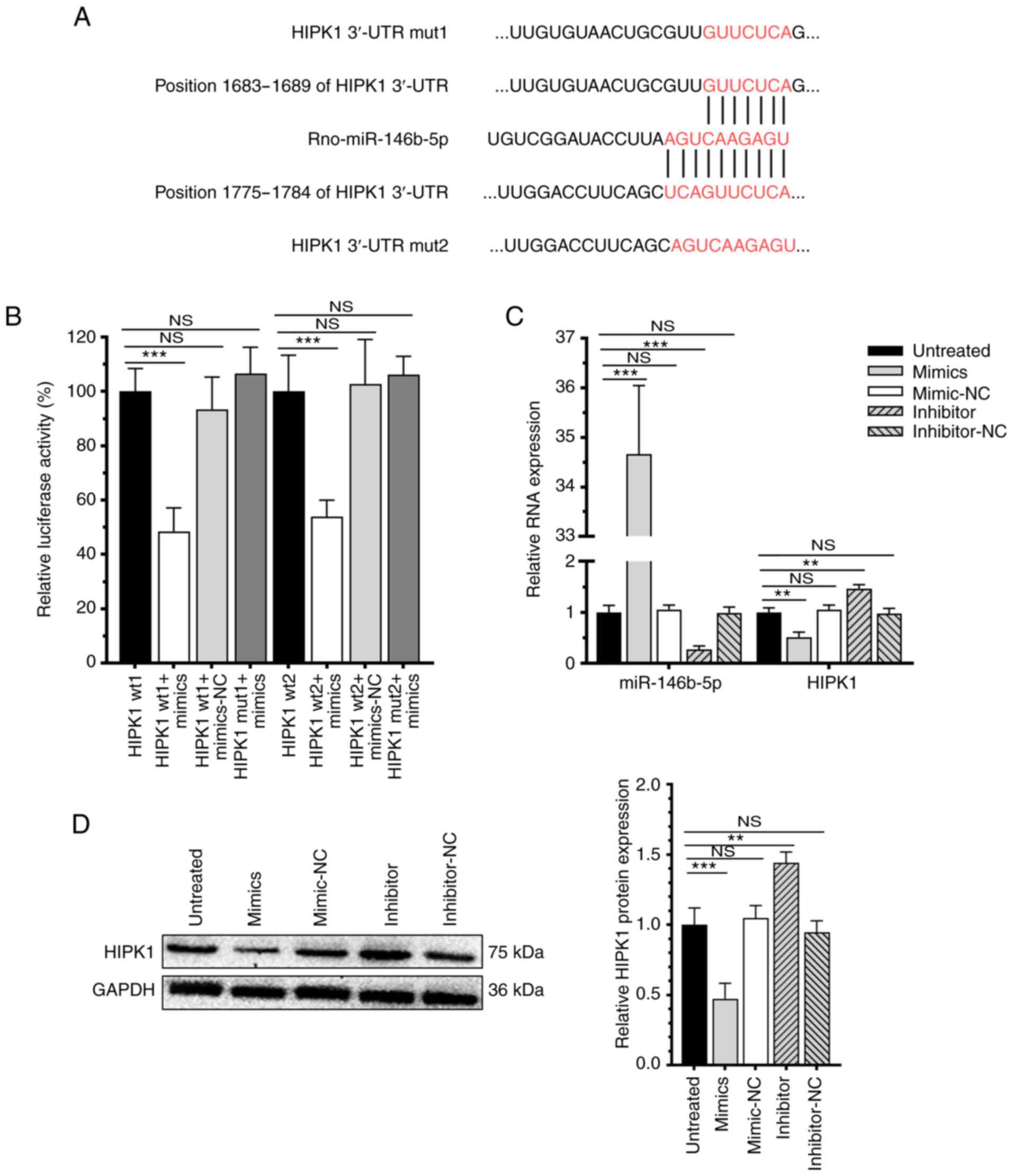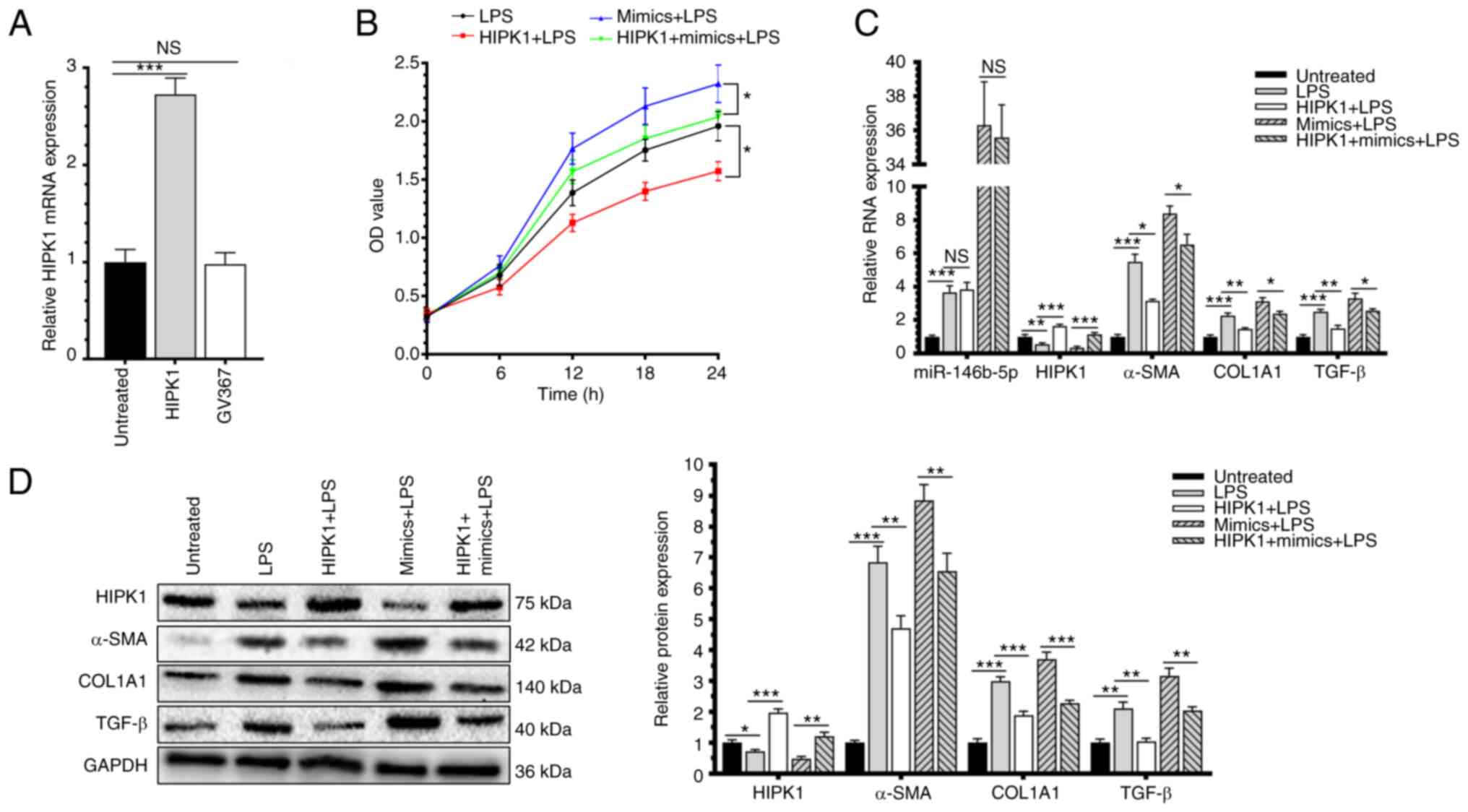|
1
|
Hernandez-Gea V and Friedman SL:
Pathogenesis of liver fibrosis. Annu Rev Pathol. 6:425–456.
2011.PubMed/NCBI View Article : Google Scholar
|
|
2
|
Hou W and Syn WK: Role of metabolism in
hepatic stellate cell activation and fibrogenesis. Front Cell Dev
Biol. 6(150)2018.PubMed/NCBI View Article : Google Scholar
|
|
3
|
Lee UE and Friedman SL: Mechanisms of
hepatic fibrogenesis. Best Pract Res Clin Gastroenterol.
25:195–206. 2011.PubMed/NCBI View Article : Google Scholar
|
|
4
|
Jung YK and Yim HJ: Reversal of liver
cirrhosis: Current evidence and expectations. Korean J Intern Med.
32:213–228. 2017.PubMed/NCBI View Article : Google Scholar
|
|
5
|
Mekala S, Tulimilli SV, Geesala R,
Manupati K, Dhoke NR and Das A: Cellular crosstalk mediated by
platelet-derived growth factor BB and transforming growth factor
beta during hepatic injury activates hepatic stellate cells. Can J
Physiol Pharmacol. 96:728–741. 2018.PubMed/NCBI View Article : Google Scholar
|
|
6
|
Bartel DP: MicroRNAs: Genomics,
biogenesis, mechanism, and function. Cell. 116:281–297.
2004.PubMed/NCBI View Article : Google Scholar
|
|
7
|
Nakamura M, Kanda T, Sasaki R, Haga Y,
Jiang X, Wu S, Nakamoto S and Yokosuka O: MicroRNA-122 inhibits the
production of inflammatory cytokines by targeting the PKR activator
PACT in human hepatic stellate cells. PLoS One.
10(e0144295)2015.PubMed/NCBI View Article : Google Scholar
|
|
8
|
Yu F, Chen B, Fan X, Li G, Dong P and
Zheng J: Epigenetically-regulated MicroRNA-9-5p suppresses the
activation of hepatic stellate cells via TGFBR1 and TGFBR2. Cell
Physiol Biochem. 43:2242–2252. 2017.PubMed/NCBI View Article : Google Scholar
|
|
9
|
Li X, Luo Y, Yu L, Lin Y, Luo D, Zhang H,
He Y, Kim YO, Kim Y, Tang S and Min W: SENP1 mediates TNF-induced
desumoylation and cytoplasmic translocation of HIPK1 to enhance
ASK1-dependent apoptosis. Cell Death Differ. 15:739–750.
2008.PubMed/NCBI View Article : Google Scholar
|
|
10
|
Rey C, Soubeyran I, Mahouche I, Pedeboscq
S, Bessede A, Ichas F, De Giorgi F and Lartigue L: HIPK1 drives p53
activation to limit colorectal cancer cell growth. Cell Cycle.
12:1879–1891. 2013.PubMed/NCBI View
Article : Google Scholar
|
|
11
|
van der Laden J, Soppa U and Becker W:
Effect of tyrosine autophosphorylation on catalytic activity and
subcellular localisation of homeodomain-interacting protein kinases
(HIPK). Cell Commun Signal. 13(3)2015.PubMed/NCBI View Article : Google Scholar
|
|
12
|
Kondo S, Lu Y, Debbas M, Lin AW, Sarosi I,
Itie A, Wakeham A, Tuan J, Saris C, Elliott G, et al:
Characterization of cells and gene-targeted mice deficient for the
p53-binding kinase homeodomain-interacting protein kinase 1
(HIPK1). Proc Natl Acad Sci USA. 100:5431–5436. 2003.PubMed/NCBI View Article : Google Scholar
|
|
13
|
Livak KJ and Schmittgen TD: Analysis of
relative gene expression data using real-time quantitative PCR and
the 2(-Delta Delta C(T)) method. Methods. 25:402–408.
2001.PubMed/NCBI View Article : Google Scholar
|
|
14
|
Kisseleva T and Brenner DA: Mechanisms of
fibrogenesis. Exp Biol Med (Maywood). 233:109–122. 2008.PubMed/NCBI View Article : Google Scholar
|
|
15
|
Iwaisako K, Jiang C, Zhang M, Cong M,
Moore-Morris TJ, Park TJ, Liu X, Xu J, Wang P, Paik YH, et al:
Origin of myofibroblasts in the fibrotic liver in mice. Proc Natl
Acad Sci USA. 111:E3297–E3305. 2014.PubMed/NCBI View Article : Google Scholar
|
|
16
|
Jesudian A, Desale S, Julia J, Landry E,
Maxwell C, Kallakury B, Laurin J and Shetty K: Donor factors
including donor risk index predict fibrosis progression, allograft
loss, and patient survival following liver transplantation for
hepatitis C virus. J Clin Exp Hepatol. 6:109–114. 2016.PubMed/NCBI View Article : Google Scholar
|
|
17
|
Winkle M, El-Daly SM, Fabbri M and Calin
GA: Noncoding RNA therapeutics-challenges and potential solutions.
Nat Rev Drug Discov. 20:629–651. 2021.PubMed/NCBI View Article : Google Scholar
|
|
18
|
Ali Sheikh MS, Alduraywish A, Almaeen A,
Alruwali M, Alruwaili R, Alomair BM, Salma U, Hedeab GM, Bugti N
and Abdulhabeeb IAM: Therapeutic value of miRNAs in coronary artery
disease. Oxid Med Cell Longev. 2021(8853748)2021.PubMed/NCBI View Article : Google Scholar
|
|
19
|
Fodor A, Lazar AL, Buchman C, Tiperciuc B,
Orasan OH and Cozma A: MicroRNAs: The link between the metabolic
syndrome and oncogenesis. Int J Mol Sci. 22(6337)2021.PubMed/NCBI View Article : Google Scholar
|
|
20
|
Riaz F, Chen Q, Lu K, Osoro EK, Wu L, Feng
L, Zhao R, Yang L, Zhou Y, He Y, et al: Inhibition of miR-188-5p
alleviates hepatic fibrosis by significantly reducing the
activation and proliferation of HSCs through PTEN/PI3K/AKT pathway.
J Cell Mol Med. 25:4073–4087. 2021.PubMed/NCBI View Article : Google Scholar
|
|
21
|
Li B, Liu J, Xin X, Zhang L, Zhou J, Xia
C, Zhu W and Yu H: MiR-34c promotes hepatic stellate cell
activation and liver fibrogenesis by suppressing ACSL1 expression.
Int J Med Sci. 18:615–625. 2021.PubMed/NCBI View Article : Google Scholar
|
|
22
|
Li H, Zhang L, Cai N, Zhang B and Sun S:
MicroRNA-494-3p prevents liver fibrosis and attenuates hepatic
stellate cell activation by inhibiting proliferation and inducing
apoptosis through targeting TRAF3. Ann Hepatol.
23(100305)2021.PubMed/NCBI View Article : Google Scholar
|
|
23
|
Zhou M, Gao Y, Wang M, Guo X, Li X, Zhu F,
Xu S and Qin R: MiR-146b-3p regulates proliferation of pancreatic
cancer cells with stem cell-like properties by targeting MAP3K10. J
Cancer. 12:3726–3740. 2021.PubMed/NCBI View Article : Google Scholar
|
|
24
|
Wang D, Feng M, Ma X, Tao K and Wang G:
Transcription factor SP1-induced microRNA-146b-3p facilitates the
progression and metastasis of colorectal cancer via regulating
FAM107A. Life Sci. 277(119398)2021.PubMed/NCBI View Article : Google Scholar
|
|
25
|
Liu X, Fu Q, Bian X, Fu Y, Xin J, Liang N,
Li S, Zhao Y, Fang L, Li C, et al: Long non-coding RNA MAPK8IP1P2
inhibits lymphatic metastasis of thyroid cancer by activating hippo
signaling via sponging miR-146b-3p. Front Oncol.
10(600927)2021.PubMed/NCBI View Article : Google Scholar
|
|
26
|
Ouyang B, Pan N, Zhang H, Xing C and Ji W:
miR146b5p inhibits tumorigenesis and metastasis of gallbladder
cancer by targeting Tolllike receptor 4 via the nuclear factor-κB
pathway. Oncol Rep. 45(15)2021.PubMed/NCBI View Article : Google Scholar
|
|
27
|
Ge S, Wu X, Xiong Y, Xie J, Liu F, Zhang
W, Yang L, Zhang S, Lai L, Huang J, et al: HMGB1 inhibits HNF1A to
modulate liver fibrogenesis via p65/miR-146b signaling. DNA Cell
Biol. 39:1711–1722. 2020.PubMed/NCBI View Article : Google Scholar
|
|
28
|
Ge S, Zhang L, Xie J, Liu F, He J, He J,
Wang X and Xiang T: MicroRNA-146b regulates hepatic stellate cell
activation via targeting of KLF4. Ann Hepatol. 15:918–928.
2016.PubMed/NCBI View Article : Google Scholar
|
|
29
|
Kim YH, Choi CY, Lee SJ, Conti MA and Kim
Y: Homeodomain-interacting protein kinases, a novel family of
co-repressors for homeodomain transcription factors. J Biol Chem.
273:25875–25879. 1998.PubMed/NCBI View Article : Google Scholar
|
|
30
|
Meng L, Zhao X and Zhang H: HIPK1
interference attenuates inflammation and oxidative stress of acute
lung injury via autophagy. Med Sci Monit. 25:827–835.
2019.PubMed/NCBI View Article : Google Scholar
|
|
31
|
Palkina N, Komina A, Aksenenko M, Moshev
A, Savchenko A and Ruksha T: miR-204-5p and miR-3065-5p exert
antitumor effects on melanoma cells. Oncol Lett. 15:8269–8280.
2018.PubMed/NCBI View Article : Google Scholar
|
|
32
|
Conte A and Pierantoni GM: Update on the
regulation of HIPK1, HIPK2 and HIPK3 protein kinases by microRNAs.
MicroRNA. 7:178–186. 2018.PubMed/NCBI View Article : Google Scholar
|


















